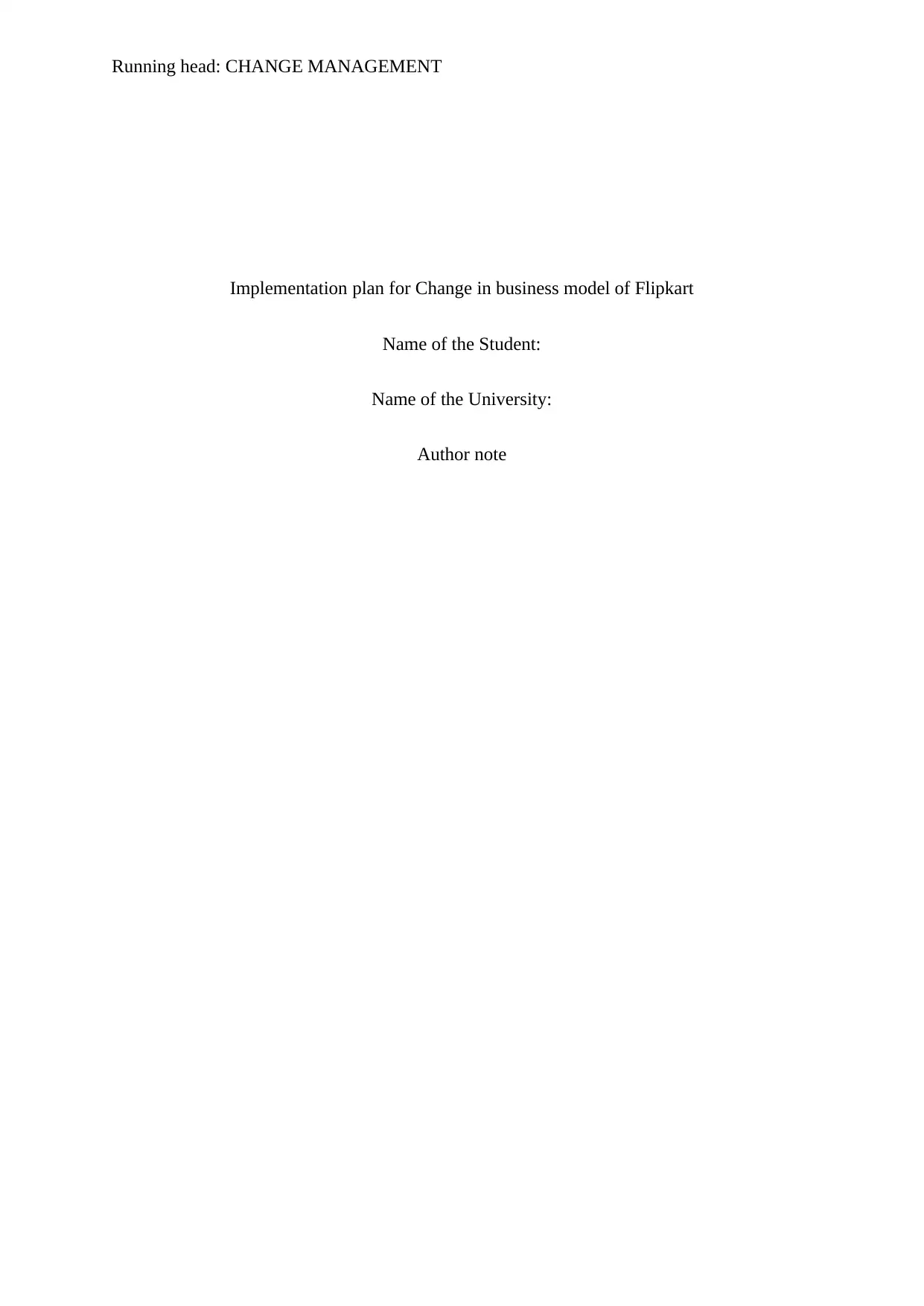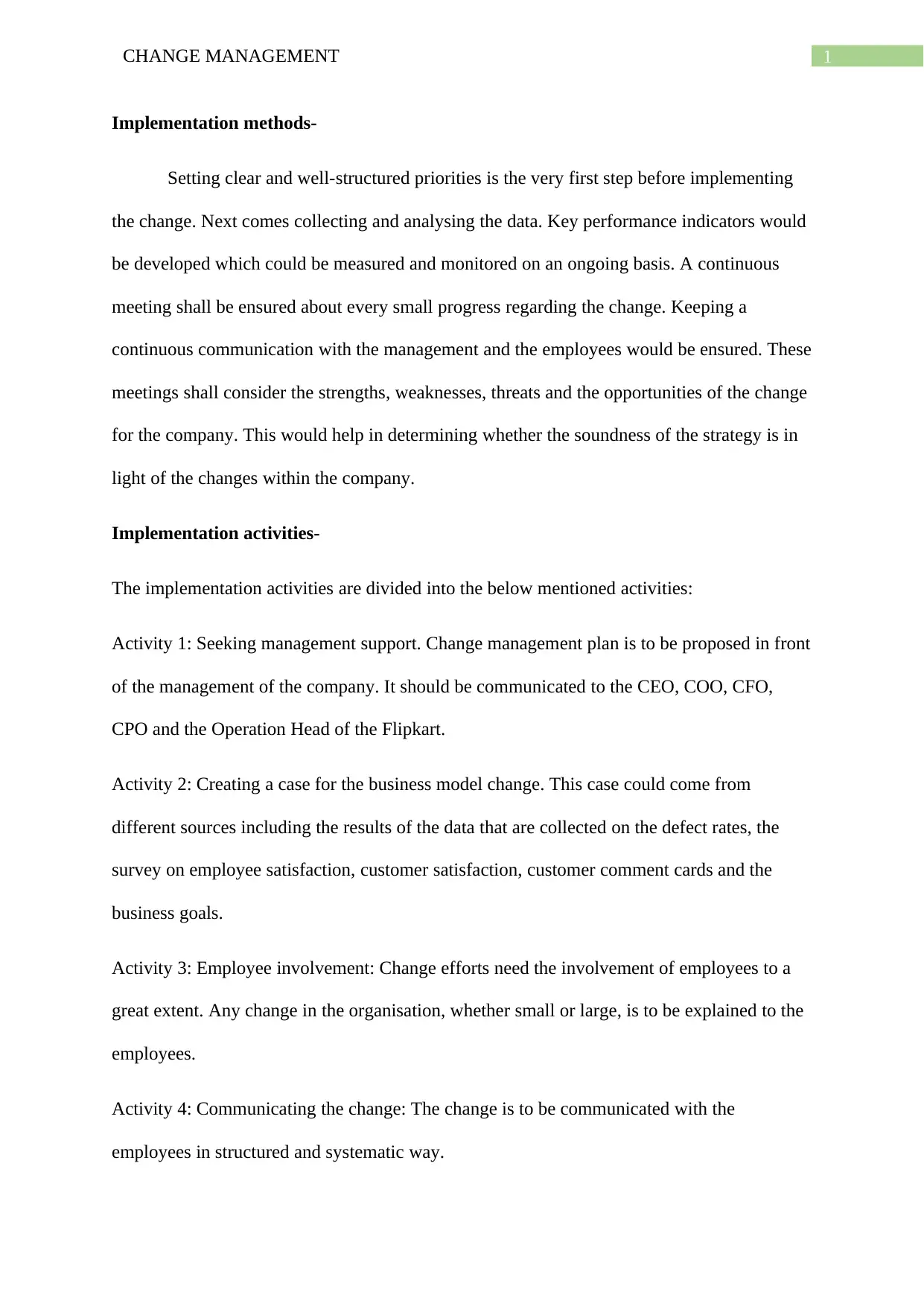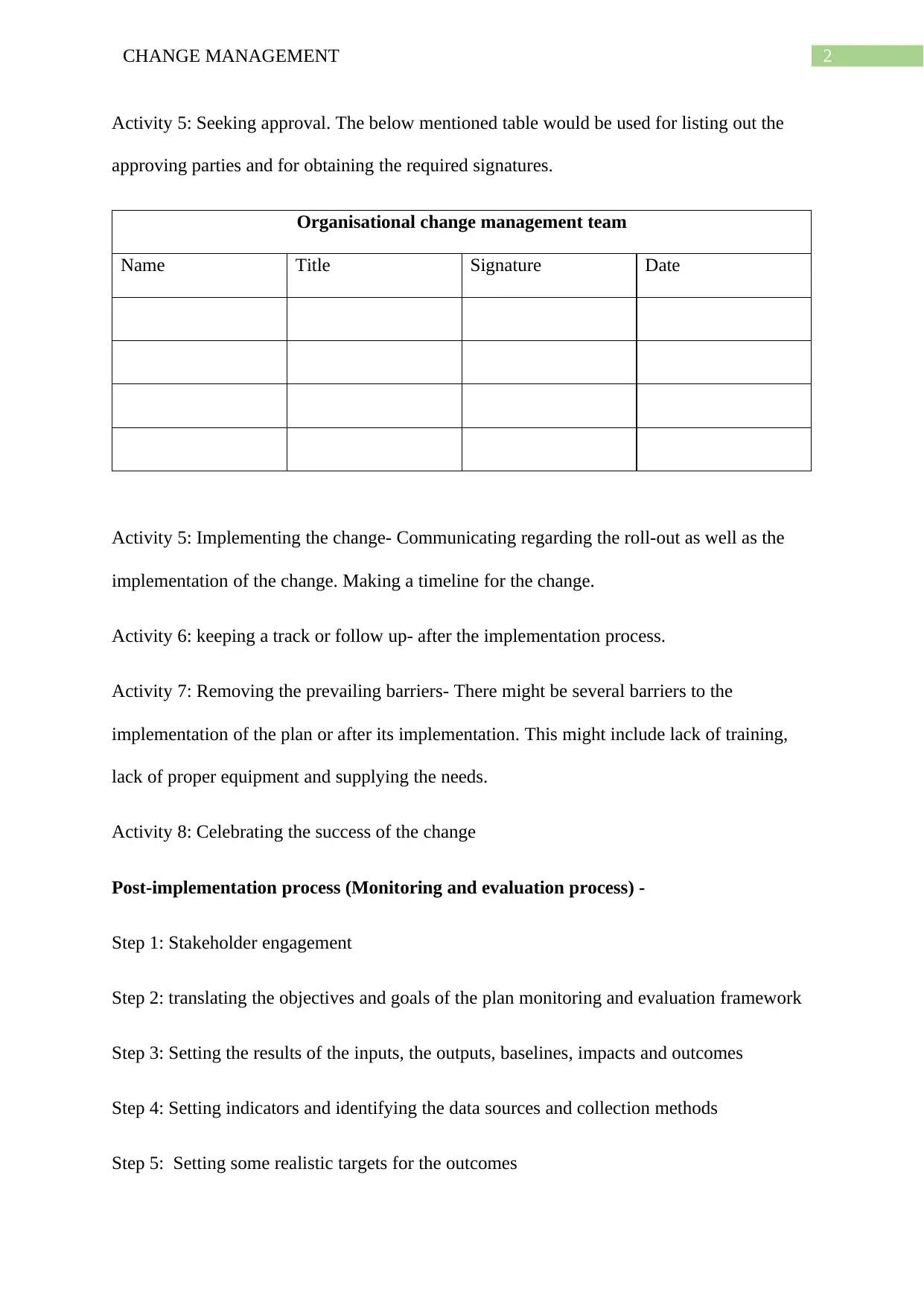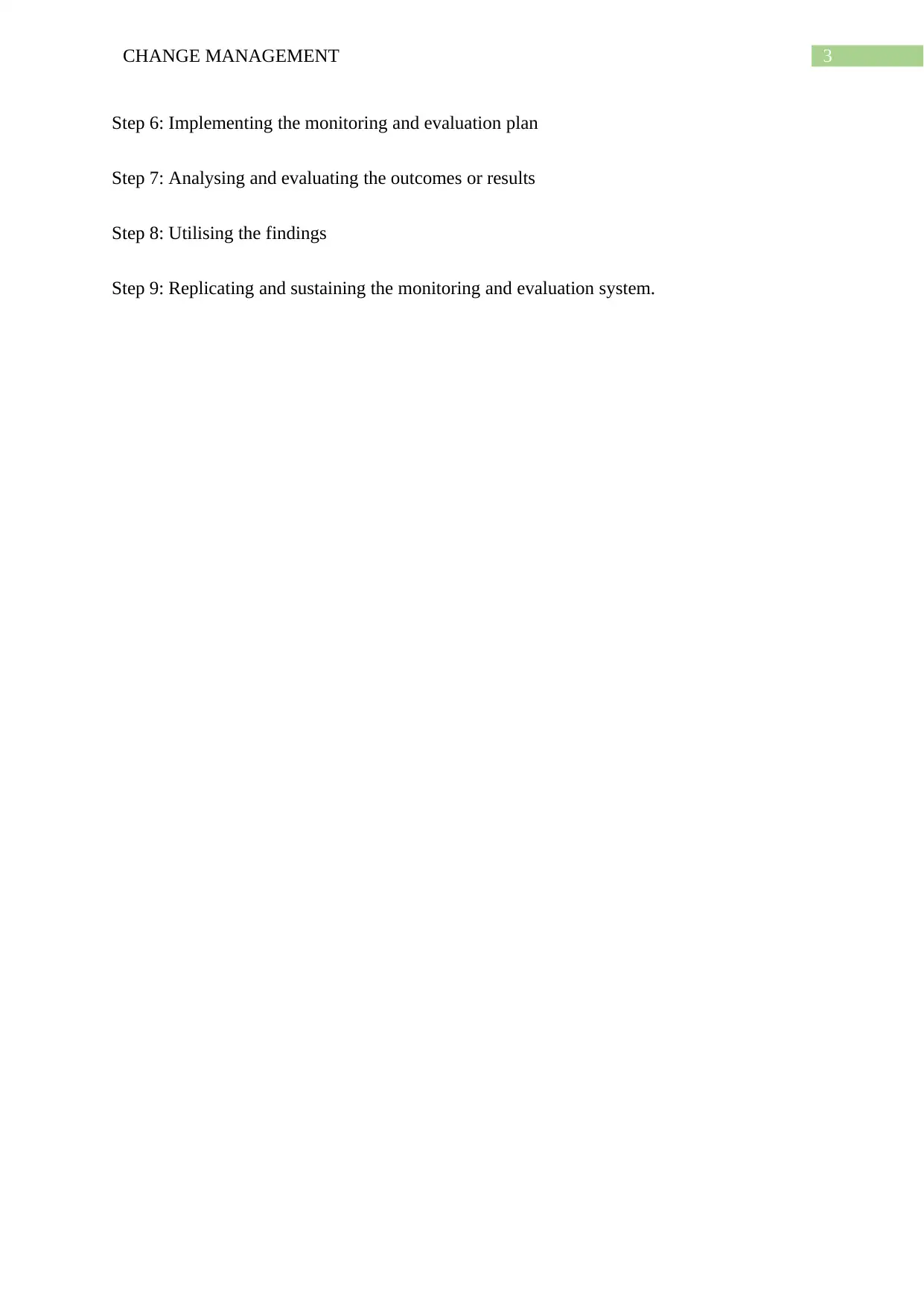Change Management Implementation Plan: Business Model for Flipkart
VerifiedAdded on 2022/01/08
|4
|538
|23
Report
AI Summary
This report presents a detailed change management implementation plan specifically tailored for Flipkart's business model. It begins by outlining the importance of setting clear priorities, collecting and analyzing data, and maintaining consistent communication with management and employees. The report then details the implementation activities, including securing management support, creating a case for change based on data, and ensuring employee involvement. It emphasizes the importance of structured communication, obtaining necessary approvals, and establishing a timeline for the change. The post-implementation process includes stakeholder engagement, setting objectives, establishing a monitoring and evaluation framework, and analyzing outcomes to ensure the plan's success. The report covers key aspects like overcoming barriers and celebrating successes, providing a comprehensive approach to managing and implementing change within the organization.
1 out of 4











![[object Object]](/_next/static/media/star-bottom.7253800d.svg)